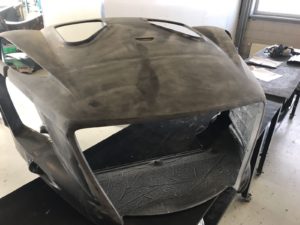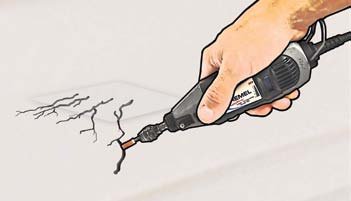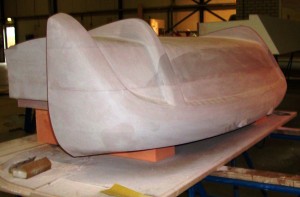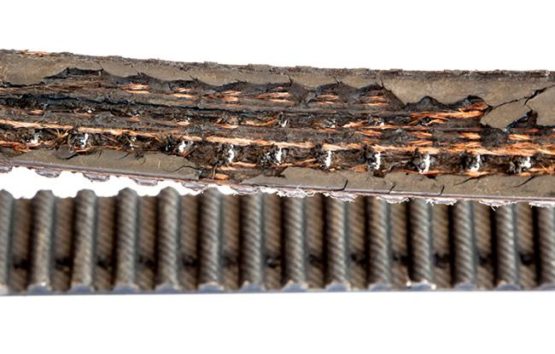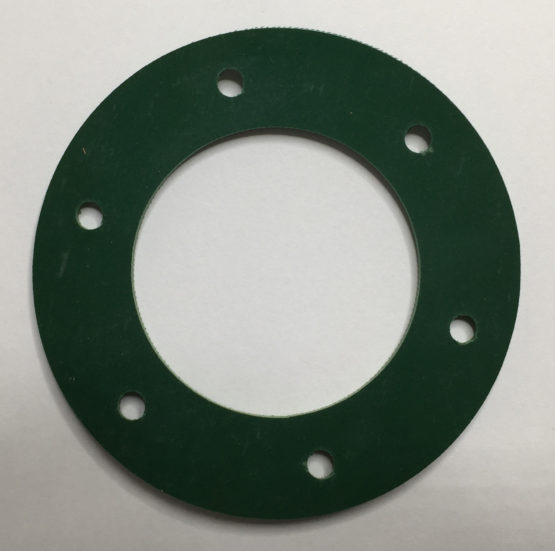Most of the repair jobs found on fiberglass Donkervoort parts are cosmetic in nature, for the majority found on rear end wheel covers and nose cones. Cracking or crazing of the gelcoat and scrapes account for much of the repair work. Permanent repairs to these types of damage can be made with Mr. ZAP 30 minutes Epoxy. When properly applied, an epoxy repair offers an extremely durable, water-resistant repair which is an excellent base for a fresh coat of paint.
It’s easy to account for the scrapes and cracks that result from impacts, but the causes of flex cracking or crazing may not be as obvious.
Most cracks or crazing that appear gradually and get worse over time are the result of flexing and are most often found in areas of solid laminate.
In addition to the cosmetic surface repair, a thorough repair will often require structural repair or reinforcing to reduce the flexing. The longer a laminate is allowed to flex, or the greater the impact, the deeper the cracks. The deeper a crack extends into the laminate, the more the panel’s strength is reduced.
The first step in the repair is to prepare the damaged area and assess the degree of damage:
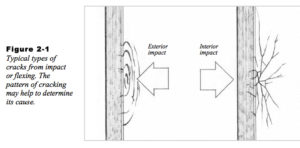 Examine the pattern and location of cracks to determine their cause (Figure 2-1). If the pattern or location indicates flexing, examine the interior side of the panel to determine the best location for additional. If the cracks are a result of impact, examine the interior side of the panel to determine whether damage extends through the entire laminate. Open the cracks for repair. Use a Dremel tool to scrape down to the bottom of the cracks. Beveling the sides of the crack provides more bonding area.
Examine the pattern and location of cracks to determine their cause (Figure 2-1). If the pattern or location indicates flexing, examine the interior side of the panel to determine the best location for additional. If the cracks are a result of impact, examine the interior side of the panel to determine whether damage extends through the entire laminate. Open the cracks for repair. Use a Dremel tool to scrape down to the bottom of the cracks. Beveling the sides of the crack provides more bonding area.
Remove any surface contaminants such as wax or grease. Wipe an area at least twice as large as the damaged area with a wax and silicone remover such as Acetone or other appropriate solvent. Dry the area with paper towels before the solvent evaporates. Scrape or grind with a Dremel tool as deep as necessary to reach solid, undamaged material. The depth of the crack will determine which course of repair to follow.
Shallow cracks or scrapes that affect only the gelcoat layer may be repaired with Epoxy from Mr. ZAP.
Minor cracks or scrapes that run through the gelcoat into the first chopped strand mat layers of the laminate should be repaired with epoxy using the procedures described below. If necessary, reinforce the laminate to reduce flexing.
Deep cracks extending into woven fabric of the laminate require a structural repair before beginning the cosmetic repair. If the damage is the result of a scrape or gouge, or cracks were exposed with a Dremel tool, complete the repair as follows: Grind a shallow bevel around the damaged material. Remove any dust or loose material.
Fill the cracks with Mr. ZAP Epoxy.
Apply the Epoxy mixture with the flat end of a mixing stick or a plastic spreader.
Shape the thickened epoxy to match the surface contour using a plastic spreader. The mixture slightly higher than the surrounding area and remove any excess before it begins to cure. Allow the epoxy to cure thoroughly.
Sand the area to blend with the surrounding. Use 50-grit paper to remove any bumps or ridges and finish with 80-grit paper when you are close to the final shape.
Fill any remaining voids (if necessary), repeating previous steps. Wet sand the area with 180-grit paper to prepare for the final finish. Finish the area with paint.


